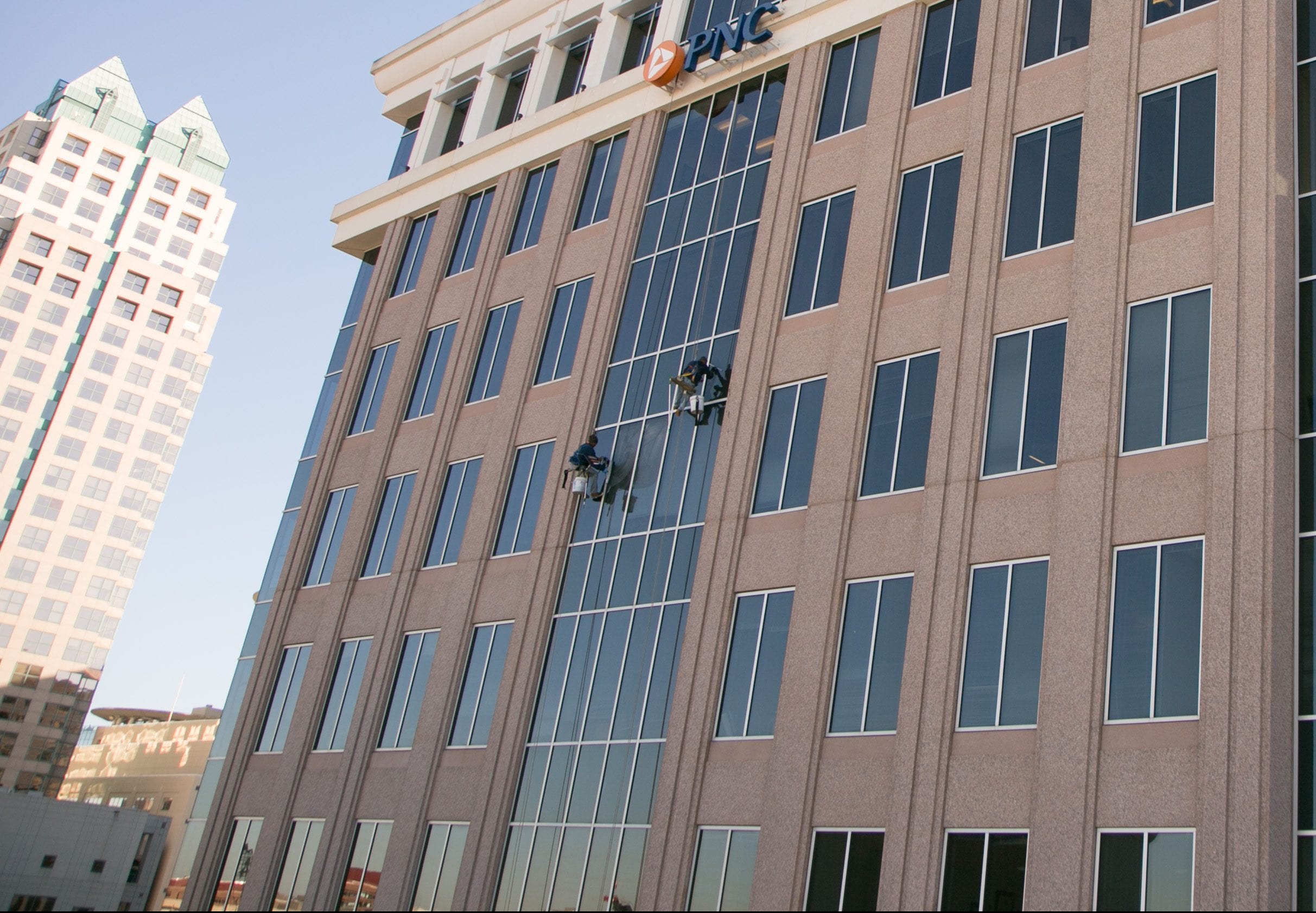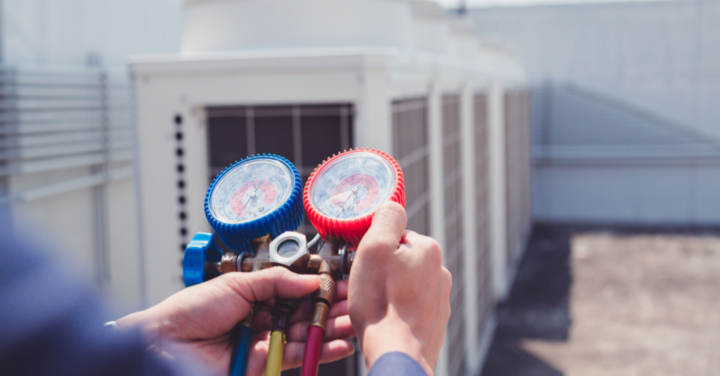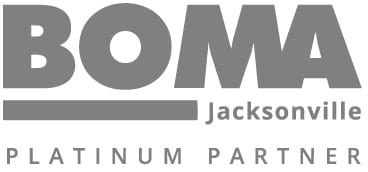On-demand building repairs are an essential component of managing and managing and owning a commercial building. Typically routine facilities maintenance is the preferred maintenance that avoids downtime of the building’s functionality and features. According to Plant Engineering, “The cost of unplanned downtime includes more than just that of the parts and labor needed to fix a piece of equipment. Both tangible and intangible costs must be considered.” However, even with a routine maintenance plan, emergencies and unforeseen circumstances will still arise, and a plan to address these concerns must be in place.
It is impossible to avoid all emergency building maintenance situations. Commercial buildings have a business at stake. Avoiding routine or on-demand maintenance is detrimental to business flow, resulting in reduced profits, loss of goods, decreased customer satisfaction, and safety concerns. On-demand building maintenance services are essential to the overall functionality of a building.
What Are On-Demand Building Repairs?
An on-demand building repair occurs when a repair is necessary and urgent. For example, when a piece of equipment or the structural integrity of a building is at risk, on-demand building repairs need to addressing immediately. On-demand building repairs occur unplanned and require quick action as they can provide a threat to the safety of the building, occupants, and employees. Some on-demand building repairs require a complete shutdown or even an evacuation, which might result in a loss of sales and profits for owners as well as compromise the safety and well-being of customers. Minor repairs are simple to put off since they don’t seem to be a big deal at first, but if put off for too long, they will become huge issues, costing thousands in damages or missed income. Therefore, timely and efficient responses to emergency maintenance are essential to the building’s lifetime.
The Costs of Reactive Maintenance–On-Demand Repairs
Equipment does not function at its best because of reactive maintenance. Systems and mechanics degrade quicker than ones that are continually adjusted and maintained. When equipment isn’t maintained correctly, it requires more energy. Equipment and structures are being run into the ground, testing their performance and causing the need for building repairs.
Reactive maintenance is still necessary even with the most robust preventive and proactive maintenance programs. Like life, unexpected emergencies happen. Although these tactics for preventative care can be helpful in some situations, they are not always successful. With proactive maintenance, there will still be unexpected breakdowns. Therefore, it is essential to have trained professionals that react appropriately to reactive issues since they will be addressing these unforeseen incidents.
Reactive maintenance costs building owners in several ways. A few of these concerns are:
- Lowered Life Cycle of Assets – The life expectancy of assets, including the building itself, is reduced significantly when preventative maintenance goes ignored. This applies unnecessary stress and strain on parts and components, ultimately leading to failure.
- Costs – Unexpected costs are a significant issue regarding reactive, on-demand building repairs, with unexpected downtime at the top of the concern list. Ignoring a proactive approach leads to missing typical indications or concerns that a system has issues, creating the need for costly on-demand building repairs. It also leads to delays in day-to-day business, which is detrimental to revenue.
- Safety – Not maintaining a building routinely increases employee and building occupants’ safety and increases the risk of emergency hazards. Predictive maintenance raises the chances of avoiding potential issues by staying ahead of any problems with assets before they occur.
- Difficult Maintenance Scheduling – Since on-demand building repairs are not on a schedule, they can throw a wrench in plans, the daily flow of business, and routine maintenance. Reactive maintenance creates urgency, and building managers must bump the tasks to the top of the list to maintain safety and prevent profit loss.
Implementing a Preventative Maintenance Checklist
Preventative maintenance is proactive maintenance, which includes routinely inspecting and servicing all working parts of the structure and its components to maintain structural integrity. A preventive maintenance checklist decreases the likelihood of failed parts while increasing the longevity of the building. Performing regular inspections also aids in reducing the occurrence of on-demand building repairs and downtime of machines. According to AssemblyMag.com, “Fortune Global 500 manufacturers lose approximately 3.3 million hours annually to unplanned downtime. That translates into $864 billion, equivalent to 8 percent of their annual revenues.” Therefore, downtime costs are detrimental to a business, and prevention is needed. This is done through preventative maintenance.
A few various repairs or needs of critical preventative maintenance tasks are:
- Routine HVAC Checks and Diagnostics – The HVAC system is one of the most instrumental pieces of equipment. It maintains the overall comfort and temperature of the building while providing ventilation and filtered air. Routinely checking the equipment will ensure it is kept in good working condition for all seasons and help avoid on-demand building repairs.
- Maintaining the Building Envelope – The building envelope significantly influences a structure’s climate, structural integrity, and energy efficiency. The foundation, walls, windows, doors, exterior insulation, and other components keep the heat outside and air-conditioned air inside. Therefore, ensure that the envelope is airtight and watertight to maintain efficiency.
- Cleaning and Maintaining the Plaza Deck – Cleaning the deck ensures the safety of all building occupants. Maintaining it ensures the waterproofing is functioning correctly and provides protection to the interior of the building.
- Inspecting Bird Deterrents in Commercial Buildings – Maintaining bird deterrents ensures that birds are not flocking toward the building and causing damage to the structure.
- Keeping up with window cleaning and Commercial Glass Restoration – Routine window cleaning allows professionals to see if they need to address any issues. Ignoring glass and window issues can lead to efficiency issues and water leaks.
- Maintaining Elevator Cabs – Elevator cabs are a vital part of a building. Regular inspection and maintenance will prevent minor issues from turning into larger ones. An elevator not functioning correctly will cause a slew of problems and concerns. According to ConsumerWatch.com, “Injuries from elevators affect about 10,200 people per year, with the majority of these accidents being related to elevator door malfunction, carriage misalignment with floors, and passenger safety vulnerabilities.”
Quality Control and Time Efficiency
Response time is critical when an emergency occurs. Ensure the right service partner is efficient, responsive and maintains excellent customer service. Quality and time efficiency increases customer satisfaction by meeting your needs quickly.
Emergency maintenance professionals are skilled and capable of upholding professionalism even under a lot of stress. When performing on-demand building repairs, customer, tenant, and staff safety and health is the top priority. Prompt and quality work provides a safe and effective environment that allows the building owner to concentrate on getting their business back up and running as usual.
Experience and Access to On-Demand Network of Vendors
Things can go sour fast without proper experience and access to multiple vendors. Therefore, facility managers must have a successful and active network of vendors that building managers can contact at all hours of the day, week, and year.
Every building is different and has its specific upkeep demands, requirements, and maintenance needs. Professional on-demand teams have training and expertise in all facets of management and maintenance for each particular type of building and its components. They are also up to date on all safety regulations and code requirements. These teams are also trained in emergencies and know how to handle each in all circumstances. Collaborating with qualified industry partners in emergency maintenance decreases risks.
Tips to Utilize the Latest Technology & Stay a Step Ahead
Technology in the facility management world is constantly changing. As a result, there are more technological options than ever to help perform routine and on-demand building repairs. Fortune Business Insights states, “Cloud-based solutions provide a safe and secure way to host facilities management software. They also assist companies in reducing expenses by improving security and cooperation across teams and subsidiaries across numerous regions.
In addition, the secure hosting of sensitive data, better security and scalability, and rapid disaster recovery are all advantages of cloud-based facilities management solutions. The backups are saved on a public or private cloud hosting platform, allowing businesses to retrieve vital server data quickly. In addition, secure logins enable data to be accessed with a reliable Internet connection.”
Current technology has provided a more straightforward way for facility managers to stay on top of changes and maintenance and is vital to the success of facility management. With current technology, facility managers can maintain control of all business operations and needs in one central location, creating clear communication, transparent maintenance operations, and straightforward avenues for tenants to submit and check on maintenance concerns. In addition, utilizing these tools makes a smooth process for proactive and on-demand building repairs.
Below are a few tips for business owners to utilize the latest technology:
- Internet of Things (IoT) allows for real-time data collection and analysis. This data helps professionals find underlying issues and fix them before they cause processes to fail and require on-demand building repairs.
- Leak Detection Tools – Leak detection is a preventative maintenance method that locates the source of a liquid or gas leak using a variety of digital instruments and technology. Professionals Technicians reduce the onset of on-demand building repairs and increase the safety of the building and its occupants by fixing problems as soon as they arise.
- Integrated Applications – Implementing integrated applications for building management allows streamlining everything in one central location. Maintenance is entered and monitored in one place and can be updated and status viewed in real-time.
What to Look for in an On-Demand Service Provider
A capable on-demand building repairs service provider ensures the safety and comfort of the building structure, employees, and occupants. In this day and age, the expectation is instant gratification in nearly every instance. Therefore, a quick and efficient repair to prevent structure deterioration must be the main priority of an on-demand service provider. With this as a priority, the impact on the overall business should be minimal. An effective service provider should always combat loss of business and revenue, loss of products and goods, and risk of injury.
There are many things to consider when choosing an on-demand service provider. But, unfortunately, sometimes providers do not have a business’s best interest at heart which is detrimental to a professional relationship.
Some features to look for in an on-demand building repairs company are:
- Availability – Ensure an on-demand team has around-the-clock availability. On-demand building repairs happen at random, unscheduled times and must be addressed immediately. Therefore, time is of the essence.
- Trained Vendors – Professional vendors, are a must when dealing with on-demand concerns. They have the training and expertise to identify and address unforeseen issues.
- Cross-Functional – Ensure the team can identify all the other issues while repairing the component. This approach saves time and money.
- Local Team – A local team is vital when promptly addressing on-demand building repairs. If a team has to contact a vendor four hours away, this does not have the building’s best interest.
- Access to Equipment – An on-demand service provider must have access to an array of equipment for various types of on-demand building repairs. From commercial windows to a bird proofing mishap – all equipment must be accessible.
- Cost Efficient – Ensure that provider is not taking advantage of the situation and that the costs are worth the on-demand building repairs. Be upfront with a budget.
- Customer Service – Providing excellent customer service is non-negotiable. An on-demand team must be efficient, responsive, and communicative.
- Safety – The on-demand building repairs team must be certified in all local, state, and national safety codes and certifications. Safety should be their number one priority when providing on-demand maintenance services.
Partner With The JOBS Group to Streamline Your On-Demand Building Repairs
Building maintenance and upkeep are crucial to managing and owning a building. Therefore preferred routine and preventative maintenance are the ideal methods to prevent major issues. There are many different ways to implement preventive maintenance versus reactive maintenance.
However, not every situation is fortunate enough to dodge emergencies. When emergencies do occur, on-demand building repairs are needed. They must be implemented immediately to reduce maximum damages to the building, its occupants, staff, and the maintenance team.
When choosing a professional maintenance team, ensure that a preventative maintenance checklist is in place, that they are capable of professionalism and efficiency, and that they leverage the latest technology while providing a quality product. Taking advantage of the newest technology is a game-changer for routine and emergency maintenance services. Partner with The A1orange Group to streamline your on-demand building repairs today!







